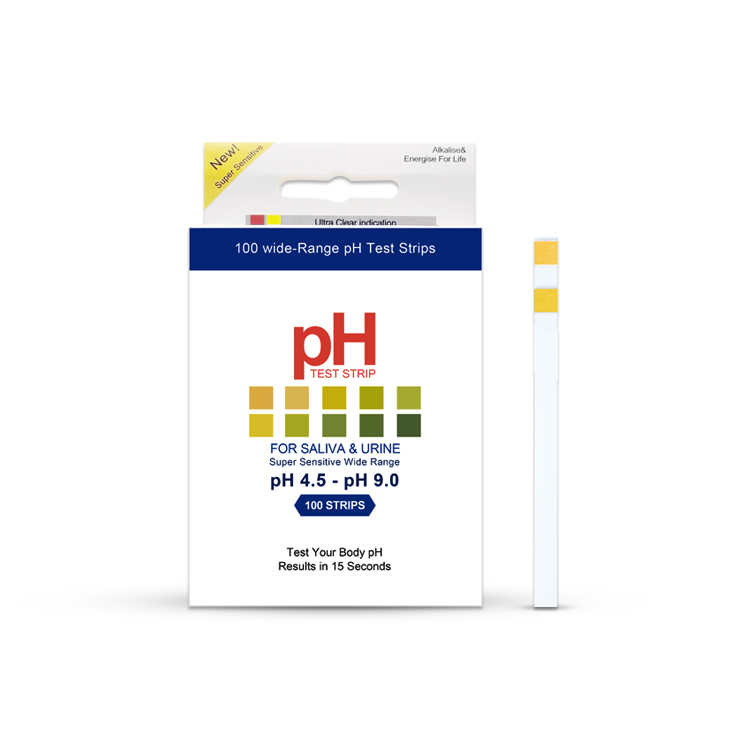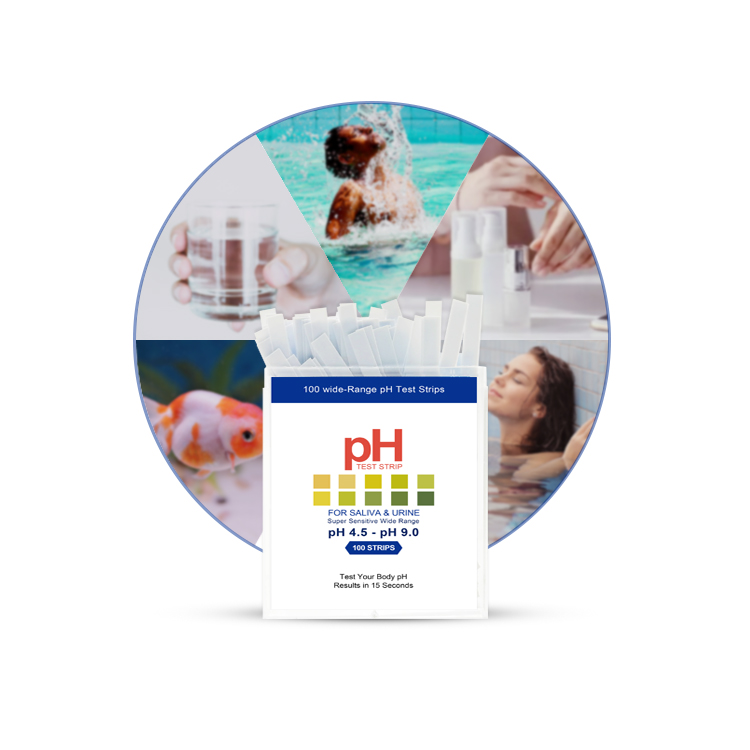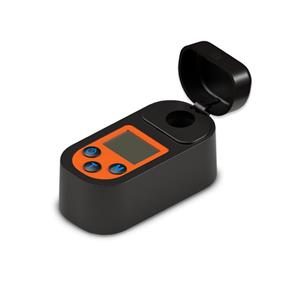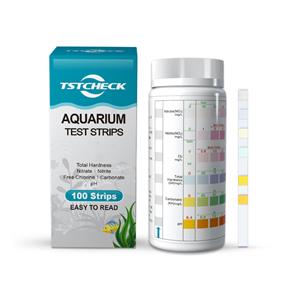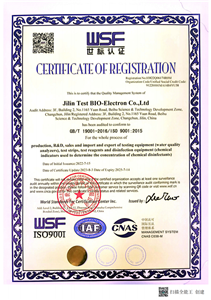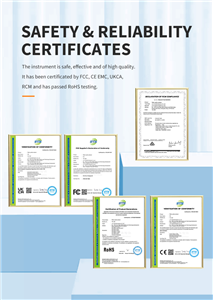Saliva Ph Test Kit Strips 4.5-9.0
Brand :TSTCHECK
Product origin :Changchun, CN
Delivery time :3-20 days
Supply capacity :300,000 bottles
Do you know what is Saliva Ph Test Strips? A Saliva Ph Test Strips is ready to use, for your convenience; tests pH value for body. It is developed and manufactured by Jilin Test Bio-Electron Co., Ltd. The testing products have been successful in the world market for many years.
As rapid and affordable test products, Saliva Ph Test adopts new chromogenic agents and use highly sensitive chromogenic reaction activators to perform semi-quantitative analysis of pH level.
How to use the Saliva Ph Test Strips? To remove acid bacteria from your mouth, fill your mouth with saliva before swallowing. Then pour the saliva into a spoon, dip the pH test paper into the saliva, wait for 15 seconds and compare with the color code to read the pH.
If you want to test urine, you can take the urine sample in the middle section, place the pH test paper in the sample, shake off the excess urine, wait for 15 seconds and compare with the color code, read the pH value.
pH Test Strips: A Versatile Tool for Acid - Base Measurement
1. Introduction
2. Understanding pH
2.1 The pH Scale
2.2 Significance of pH in Different Contexts
Biological Systems: In the human body, maintaining the correct pH balance is essential for proper physiological function. For instance, blood has a narrow pH range of 7.35 - 7.45. Deviations from this range can lead to serious health problems. The pH of saliva and urine can also provide insights into an individual's health status. Saliva typically has a pH between 6.2 - 7.6, and changes in this range can be associated with oral health issues, diet, or underlying medical conditions. Urine pH usually ranges from 4.5 - 8.0, and variations can indicate problems such as urinary tract infections, kidney stones, or metabolic disorders.
Environmental Applications: In environmental science, pH is a critical parameter for assessing water quality. Aquatic ecosystems rely on a specific pH range for the survival of various organisms. Acid rain, which has a lower pH due to the presence of pollutants like sulfur dioxide and nitrogen oxides, can have detrimental effects on lakes, rivers, and forests. Monitoring the pH of soil is also important as it affects plant growth and nutrient availability.
Industrial Processes: Many industrial processes are highly sensitive to pH. In the food and beverage industry, pH control is crucial for product quality and safety. For example, the pH of yogurt is carefully regulated to ensure proper fermentation and shelf - life. In the manufacturing of chemicals, textiles, and paper, precise pH adjustment is necessary to optimize production processes and product characteristics.
3. How pH Test Strips Work
3.1 Components of pH Test Strips
Indicator Chemicals: Common indicator chemicals used in pH test strips include bromothymol blue, phenolphthalein, and methyl orange. Each indicator has a specific pH range over which it changes color. For example, bromothymol blue changes from yellow to blue as the pH of the solution changes from acidic to basic, with the transition occurring around pH 6.0 - 7.6. The test strips are often designed to contain a combination of different indicators to cover a broader pH range.
Base Material: The indicator - impregnated layer is supported by a base material, which is usually made of a sturdy and non - reactive material such as plastic or a special type of paper. The base material provides structural integrity to the test strip and makes it easy to handle during the testing process.
3.2 The Chemical Reaction Underlying pH Detection
3.3 Color - Comparison and pH Determination
4. Types of pH Test Strips
4.1 General - Purpose pH Test Strips
4.2 Narrow - Range pH Test Strips
4.3 Specialized pH Test Strips
Saliva Test Strips: Saliva test strips are specifically designed to measure the pH of saliva. As mentioned earlier, the pH of saliva can provide important information about an individual's oral health and overall well - being. These test strips are often used in dental clinics, oral hygiene research, and by individuals who are interested in monitoring their oral pH at home. For example, people with a history of dental caries may use saliva test strips to check if their saliva is too acidic, as acidic saliva can contribute to tooth decay. The test strips for saliva are formulated to be sensitive to the unique chemical composition of saliva and may have a slightly different set of indicator chemicals or a modified design to ensure accurate results.
Urine pH Test Strips: Urine pH test strips are used to measure the pH of urine. Changes in urine pH can be an indicator of various health conditions. For example, a consistently high urine pH (alkaline urine) may be associated with urinary tract infections caused by certain types of bacteria, while a low urine pH (acidic urine) can be a sign of metabolic acidosis or a diet high in acidic foods. These test strips are commonly used in medical clinics for routine urine analysis and by individuals who are self - monitoring their health, especially those with conditions like kidney disease or diabetes.
5. Using pH Test Kits and Test Strips Effectively
5.1 Sample Collection
For Saliva Testing: When using saliva test strips, it is important to collect saliva properly. The individual should avoid eating, drinking, or smoking for at least 30 minutes before testing to ensure that the saliva sample is representative of the normal oral environment. The saliva can be collected by simply spitting into a clean container or by using a special saliva collection device. The test strip is then dipped into the saliva sample, taking care not to touch the strip with fingers to avoid contamination.
For Urine Testing: In the case of urine pH test strips, a mid - stream urine sample is usually preferred. The individual should clean the genital area before urinating. The first part of the urine stream is allowed to flow into the toilet, and then a sample is collected in a clean container. The test strip is then immersed in the urine sample. It is important to follow the specific instructions provided with the test strips, as different brands may have slightly different recommended collection and testing procedures.
For General Solutions: When testing the pH of other solutions, such as in industrial or laboratory settings, the sample should be collected in a clean container that is appropriate for the type of solution. For example, if testing the pH of a chemical solution, the container should be made of a material that does not react with the solution. The test strip is then dipped into the solution, ensuring that the entire indicator area of the strip is covered.
5.2 Testing Procedure
Dipping and Reaction Time: Once the sample is collected, the pH test strip is carefully dipped into the sample. The strip should be held in the solution for the recommended amount of time, which can vary depending on the type of test strip and the manufacturer's instructions. Generally, it takes a few seconds to a minute for the color change to occur. During this time, the strip should not be moved or agitated too much to allow the chemical reaction between the indicator and the sample to proceed properly.
Reading the Results: After the appropriate reaction time, the test strip is removed from the sample, and the color is compared to the color - comparison chart. It is important to read the color in good lighting conditions to ensure accurate interpretation. If using a test strip with a numerical scale, the reading can be taken directly from the strip. In some cases, if the color on the test strip does not exactly match a color on the chart, an approximate pH value can be estimated based on the closest color match.
5.3 Frequency of Testing
Health - Related Monitoring: In health - related applications, such as monitoring saliva or urine pH, the frequency of testing depends on the individual's health condition and the reason for testing. For example, individuals with a known urinary tract infection may be advised to test their urine pH daily to monitor the effectiveness of treatment. In the case of oral health, people may choose to test their saliva pH once a week as part of a preventive oral hygiene routine.
Industrial and Environmental Applications: In industrial processes, the frequency of pH testing can vary widely. In a continuous manufacturing process where pH control is critical, such as in the production of certain chemicals, the pH may be monitored continuously using automated pH sensors in addition to periodic checks with pH test strips. In environmental monitoring, the frequency of testing the pH of water bodies or soil may depend on factors such as the stability of the environment, the presence of pollution sources, and regulatory requirements. For example, in a river near an industrial area, the water pH may be tested weekly to detect any potential pollution - related changes.
6. Advantages of pH Test Strips
6.1 Simplicity and Ease of Use
6.2 Quick Results
6.3 Cost - Effectiveness
6.4 Portability
7. Comparing pH Test Strips with pH Test Kits
7.1 Components and Functionality of pH Test Kits
7.2 Advantages of pH Test Kits
Higher Precision in Some Cases: pH test kits may offer higher precision in certain applications. For example, some kits that include a pH meter - like device with a calibration feature can provide more accurate pH readings, especially in the case of very low or very high pH values. The use of buffer solutions for calibration can help ensure that the measurement is more reliable.
Additional Information: As mentioned earlier, some pH test kits can provide additional information about the sample. In a saliva test kit, for example, there may be components to test for the presence of bacteria - fighting enzymes in addition to the pH test strip. This can give a more comprehensive picture of the oral health status.
7.3 Disadvantages of pH Test Kits
Complexity: pH test kits are generally more complex to use compared to individual pH test strips. The presence of multiple components and the need for calibration (in some cases) require more steps in the testing process. This complexity may require some training or prior experience, especially for users who are not familiar with laboratory - like procedures.
Higher Cost: Due to the inclusion of multiple components and potentially more advanced technology, pH test kits are often more expensive than a simple pack of pH test strips. This higher cost may be a deterrent for some users, especially those who only need to perform basic pH tests occasionally.
7.4 When to Choose Test Strips vs. Test Kits
For Quick and Simple Checks: If quick, on - the - go testing is required, and a general estimate of the pH is sufficient, pH test strips are the better choice. For example, a gardener who wants to quickly check the pH of the soil in their garden or a person who wants to monitor their saliva pH at home can use test strips easily and cost - effectively.
For Precise and Comprehensive Analysis: When high precision is crucial, such as in a research laboratory where accurate pH measurement is essential for experiments, or when additional information about the sample is needed, pH test kits may be more appropriate. For example, in a clinical laboratory where a detailed urine analysis is required, a comprehensive urine test kit that includes pH testing along with other tests may be used.
8. Storage and Shelf - Life of pH Test Strips
8.1 Storage Conditions
8.2 Shelf - Life
9. Conclusion
Factory. We speicalize in producing water test strips for years....more
-
Download
- Category.pdf

